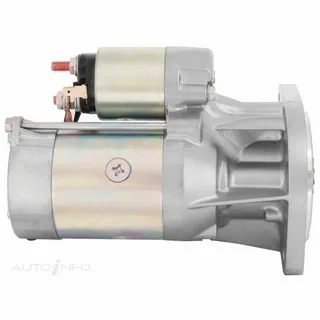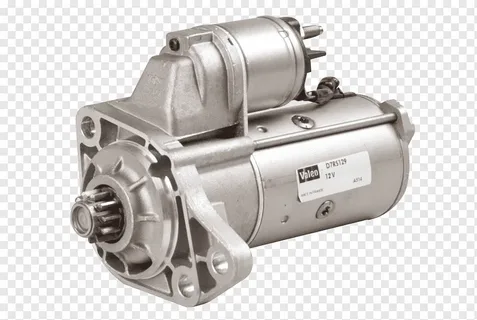The Holden Rodeo Clock Spring is an essential component in your vehicle’s steering system, responsible for maintaining electrical connections while allowing the steering wheel to turn freely. Understanding the role of the clock spring in your Rodeo is crucial for ensuring the proper functioning of your vehicle and avoiding potential issues down the road. This intricate component, when damaged, can compromise the operations of critical systems such as airbags, horns, and cruise control. Hence, prompt identification and resolution of issues related to the clock spring can prevent unexpected driving failures.
Understanding the Clock Spring’s Role in Your Rodeo
In the heart of your Holden Rodeo’s steering system lies the clock spring, a critical yet often overlooked component that plays a pivotal role in ensuring the seamless operation of steering wheel-mounted controls. This ingenious device is essentially a coiled-up ribbon of wire that serves as a conduit for electrical signals, allowing for transferring those signals from the vehicle’s steering column to various controls located on the steering wheel itself.
As the driver turns the steering wheel, the clock spring unwinds or winds accordingly, maintaining a constant electrical connection to the horn, airbag system, and any other features operated from the steering wheel, such as audio controls or cruise control settings. This continuous connection is crucial, ensuring these features remain operational regardless of the steering wheel’s position.
Without a properly functioning clock spring, drivers may experience disruptions in the functionality of these essential controls. This could range from the inconvenience of a non-working horn to the more serious implications of an airbag system that might not deploy in an accident. Therefore, the clock spring contributes to the convenience of having steering wheel-mounted controls and plays a significant role in the vehicle’s safety mechanisms.
Common Signs of a Faulty Holden Clock Spring
When diagnosing a Holden Rodeo, there are unmistakable indicators that may suggest your clock spring needs attention. One of the most common symptoms you might encounter is a malfunctioning horn. This can be particularly noticeable when you attempt to use your horn, which either does not sound or functions intermittently.
Another critical sign to watch is your dashboard’s illuminated airbag warning light. This warning should not be taken lightly, as it may denote a disruption in the airbag system’s communication directly linked to a potential clock spring malfunction. Additionally, issues with your cruise control can arise. Engaging or maintaining your cruise control becomes problematic and could point toward a clock spring issue.
These symptoms are minor inconveniences and indicate deeper electrical problems within the steering system that could impact vehicle safety and functionality. Given the clock spring’s pivotal role in ensuring the smooth operation of steering wheel-mounted controls and the proper deployment of the airbag, any signs of failure should prompt immediate action.
Ignoring these signs not only jeopardizes the comfort of your driving experience but, more importantly, compromises your safety and that of your passengers. Therefore, at the first sign of trouble — be it through unresponsive controls, warning lights, or cruise control malfunctions — it’s imperative to seek a professional diagnosis to address and rectify any issues related to your Holden Rodeo’s clock spring.
Testing the Hyundai i20 Clock Spring for Issues
The clock spring in a Hyundai i20 is a crucial component of its steering system, responsible for maintaining electrical connections between the steering wheel and the vehicle’s electrical systems. Over time, the clock spring may develop issues, leading to problems with various functions controlled by the steering wheel, such as the horn, airbag, and cruise control. Testing the clock spring for issues is essential to ensure the safety and functionality of the vehicle.
Visual Inspection
Begin by visually inspecting the clock spring and its surrounding components for any signs of damage or wear. Look for frayed wires, corrosion, or any other visible abnormalities that may indicate a problem. Check the steering column and the area behind the steering wheel for any signs of impact or physical damage that could have affected the clock spring.
Diagnostic Scan Tool
A diagnostic scan tool compatible with Hyundai vehicles can retrieve any stored error codes related to the steering system or the Hyundai i20 Clock Spring specifically. These error codes can provide valuable information about the nature of the problem, helping to pinpoint the issue more accurately.
Steering Wheel Functionality
Test the functionality of various steering wheel controls, such as the horn, airbag, and any buttons or switches for features like audio or cruise control. If any of these functions are not working as expected or are intermittent, it could indicate a problem with the clock spring.
Resistance Testing
Perform resistance testing on the clock spring’s electrical connections using a multimeter. Consult the vehicle’s service manual for the specific resistance values to expect at each connection point. Deviations from these values may indicate a fault within the clock spring.
Tips for Maintaining Your Clock Spring’s Longevity
Clock springs are crucial components in many automotive steering systems, responsible for maintaining electrical connections between the steering wheel and the vehicle’s systems while allowing for rotation. Ensuring the longevity of your clock spring can prevent costly repairs and maintain safety on the road. Here are some essential tips for maintaining your clock spring:
1. Avoid Oversteering:
Excessive turning of the steering wheel can cause the clock spring to wear out prematurely. Avoid sharp or unnecessary steering movements, especially when the vehicle is stationary.
2. Regular Inspection:
Make it a habit to inspect your steering system regularly, including the clock spring, for any signs of wear or damage. Look for frayed wires, unusual noises, or resistance while turning the wheel.
3. Keep the Steering Column Clear:
Objects stored near the steering column can interfere with the clock spring’s movement, leading to strain and potential damage. Keep the area around the steering column clear of debris and belongings.
4. Use Caution When Making Repairs:
If you need to perform any maintenance or repairs on your steering system, handle the clock spring carefully. Avoid twisting or bending it excessively, and follow manufacturer guidelines meticulously.
5. Address Steering Issues Promptly:
If you notice any issues with your steering, such as a sticking or erratic movement, address them promptly. Ignoring problems can strain the clock spring and other components, leading to more extensive damage.
6. Avoid DIY Repairs Unless Qualified:
While some automotive maintenance tasks can be DIY-friendly, handling the clock spring may require specialized knowledge and tools. If unsure, consult a professional mechanic to avoid inadvertently causing damage.
Troubleshooting Clock Spring Problems
Clock springs, also known as spiral cables or clock spring assemblies, are essential in modern vehicles. They play a crucial role in maintaining electrical connections between the steering wheel and the vehicle’s electrical systems while allowing the wheel to be turned. However, clock springs can develop problems over time, like any mechanical part. Here’s a guide to troubleshooting clock spring issues:
1. Steering Wheel Controls Malfunctioning:
One of the most common signs of a faulty clock spring is malfunctioning steering wheel controls. If the buttons on your steering wheel, such as those for the horn, cruise control, or audio system, stop working or only work intermittently, it could indicate a problem with the clock spring.
2. Airbag Warning Light:
Another indicator of clock spring problems is the illumination of the airbag warning light on the dashboard. Since the clock spring is responsible for maintaining the connection to the airbag module, any disruption in its function can trigger the warning light.
3. Tilt Function Failure:
If your vehicle has a tilt-adjustable steering column, a faulty clock spring may cause the tilt function to stop working. You may notice difficulty adjusting the steering wheel’s position or become stuck in one position.
4. Strange Noises When Turning the Wheel:
When turning the steering wheel, a damaged or worn-out clock spring may produce unusual noises. These noises can range from clicking or popping to grinding or rubbing sensations, indicating internal damage or misalignment.
5. Complete Loss of Electrical Functions:
In severe cases, a failed clock spring can lead to a complete loss of electrical functions controlled by the steering wheel. This can include everything from the horn and cruise control to the audio and phone controls.
Preventative Measures to Avoid Clock Spring Failure
Adopting preventative measures is crucial in ensuring the longevity of your Holden Clock Spring and, by extension, the reliability of your vehicle’s steering and safety systems. Key strategies include maintaining a gentle approach to steering. This entails avoiding abrupt or forceful movements of the steering wheel, which can place undue stress on the clock spring’s delicate internal mechanisms.
Regular vehicle maintenance is another vital aspect of preventing clock spring failure. Ensuring your vehicle undergoes routine checks by a qualified mechanic can help identify and rectify potential issues before they escalate into more significant problems. This includes thoroughly inspecting the steering system and its components for any signs of wear or damage that could affect the clock spring.
Following the manufacturer’s recommended maintenance schedule is equally important. These guidelines ensure that all parts of your vehicle, including the clock spring, are functioning as intended. Adhering to these recommendations can significantly reduce the risk of unexpected failures and the need for costly repairs.
Additionally, being attentive to the cleanliness of the steering wheel area can prevent contaminants from affecting the clock spring. Avoid exposing the steering mechanism to liquids or debris that could penetrate the assembly and cause corrosion or blockages, compromising the clock spring’s functionality.
Conclusion
Navigating the complexities of the Holden Rodeo Clock Spring is essential for your vehicle’s smooth operation and safety. By carefully observing warning signs, committing to regular maintenance, and adhering to best practices in steering care, drivers can significantly mitigate the risk of clock spring issues. Embracing preventative measures safeguards the integral functions tied to the steering wheel and ensures the reliability of safety systems, particularly the airbag deployment mechanism. For Holden Rodeo owners and mechanics, a thorough knowledge of the clock spring’s role and maintenance can significantly enhance vehicle safety and reliability.
FAQS
Q: What’s the average lifespan of the Holden Rodeo Clock Spring?
A: A Holden Rodeo Clock Spring typically lasts anywhere from 100,000 to 150,000 miles. This range can fluctuate based on how the vehicle is driven and how well it’s maintained over time.
Q: Is it safe to operate my Holden Rodeo if the clock spring is malfunctioning?
A: Driving with a compromised clock spring is not advisable. A faulty clock spring can impact the effectiveness of essential safety features, such as the airbag system, potentially putting the driver and passengers at risk in a collision.
Q: What are the costs of replacing a clock spring in a Holden Rodeo?
A: The expense of replacing a clock spring can vary widely. It depends on factors such as the specific model of your Holden Rodeo and the rates charged by the servicing mechanic or dealership. Contacting a professional mechanic or your local dealership is recommended for the most accurate and up-to-date pricing.
Q: Can I replace the clock spring in my Holden Rodeo myself?
A: While some vehicle maintenance tasks can be DIY, replacing a clock spring involves dealing with the vehicle’s safety systems, including the airbag. Because of the complex and sensitive nature of these systems, it’s strongly advised to have the replacement done by a qualified mechanic with experience with Holden vehicles and the specific technical know-how to handle the job safely and correctly.
| Other Good Articles to Read |
| niche blogs connect |
| blogs 97 |
| Blog Stitution |
| blogs unplugged |
| blogs cotchrouge |
| blog signatr |
| blog sintonias |
| blog zilla |
| consumer forums |
| finance forums |
| g blogs |
| too blog |
| Related Business Listings |
| Contact Directory |
| Local Business Profiles |



